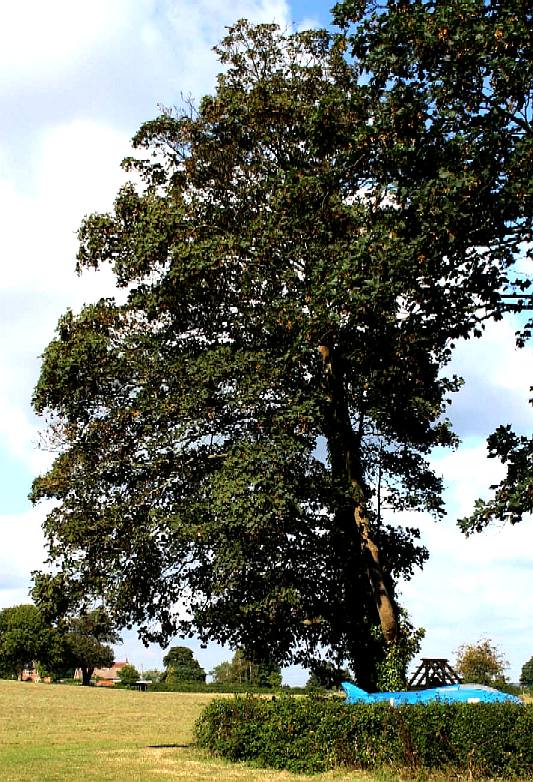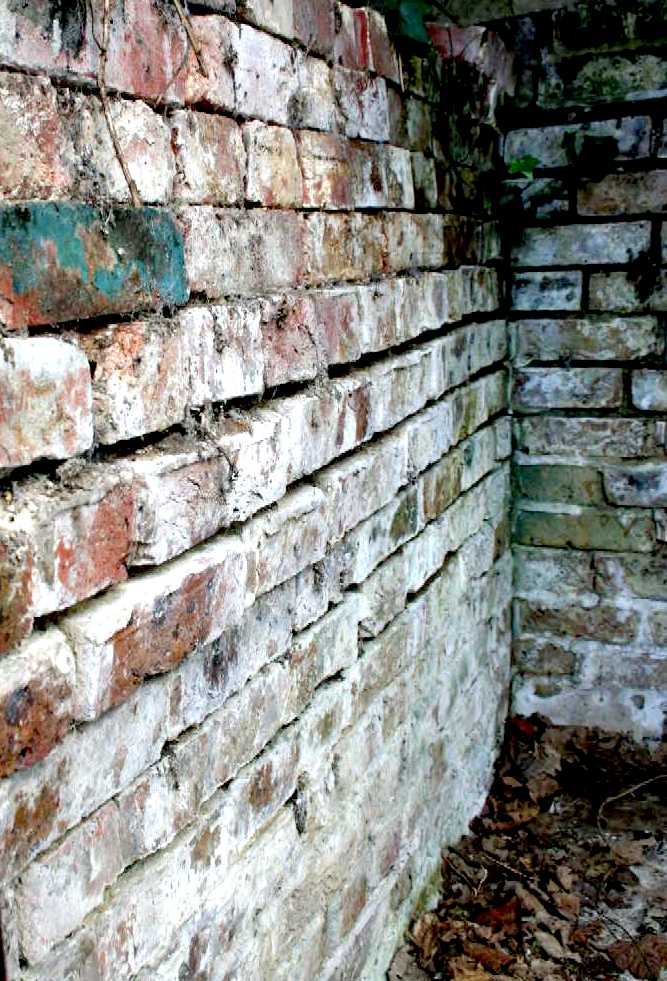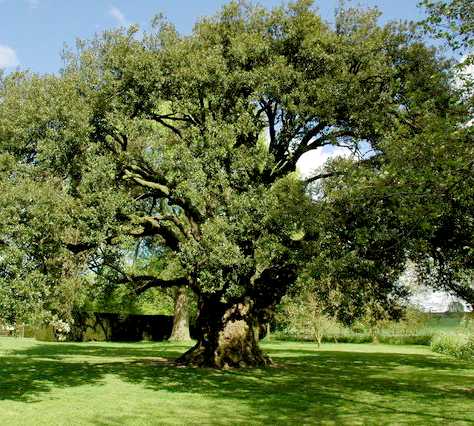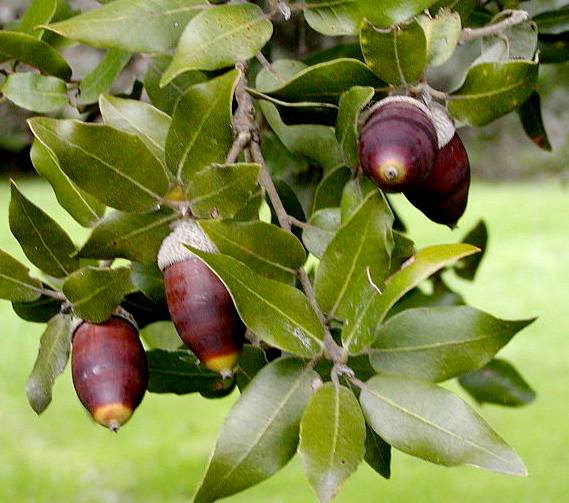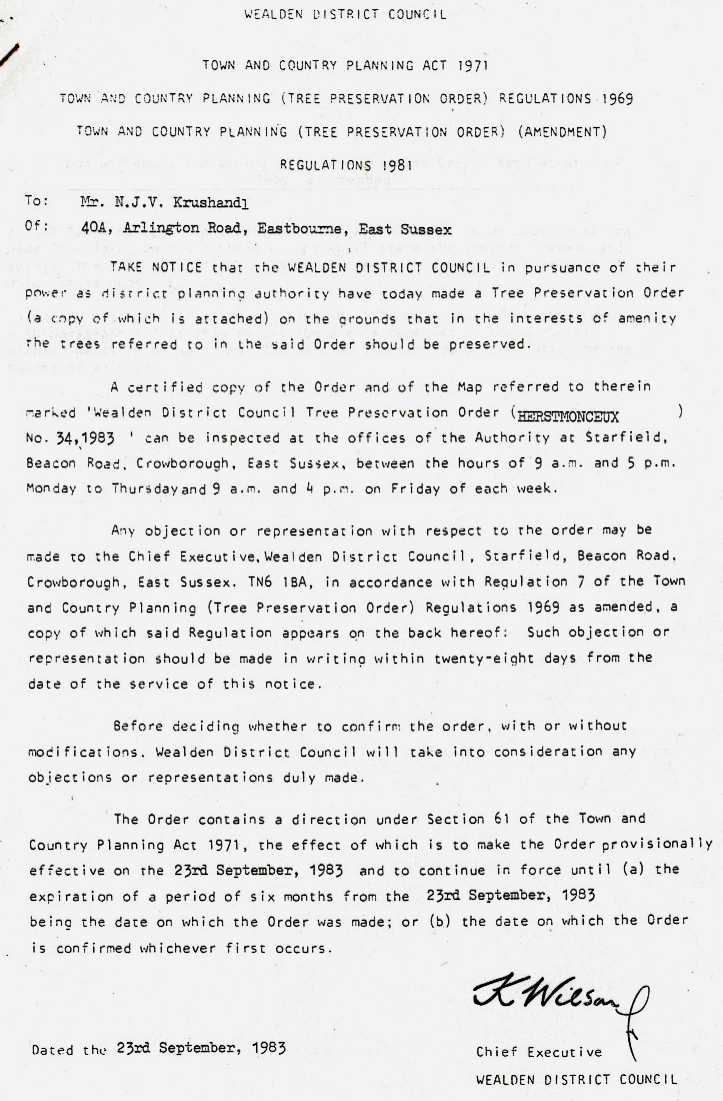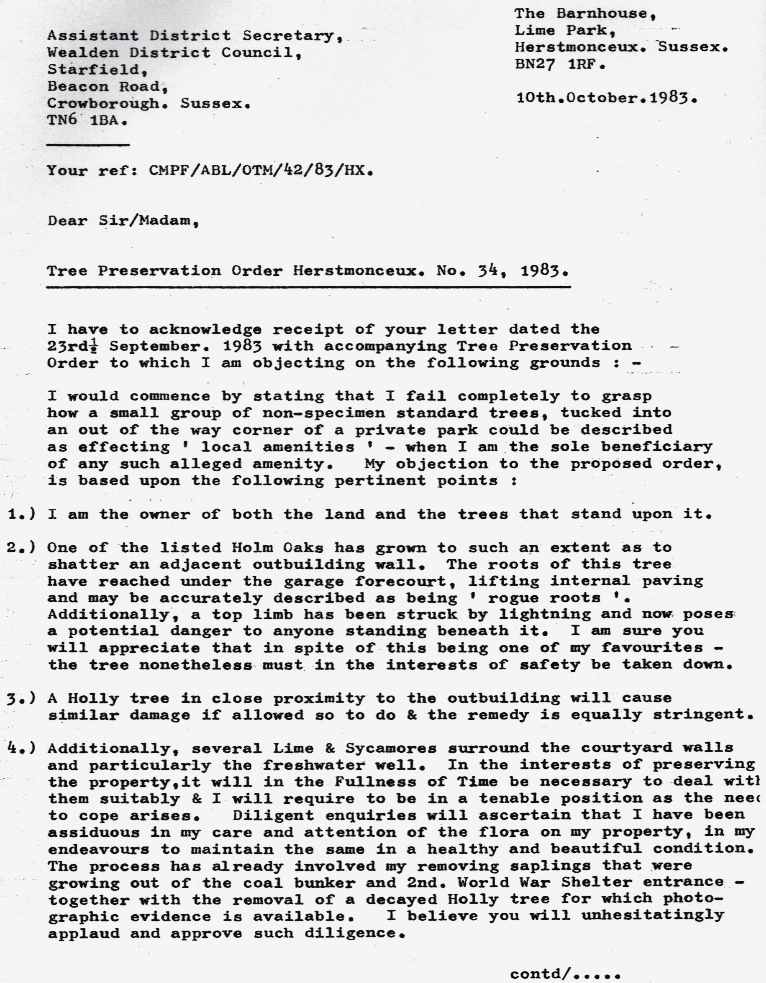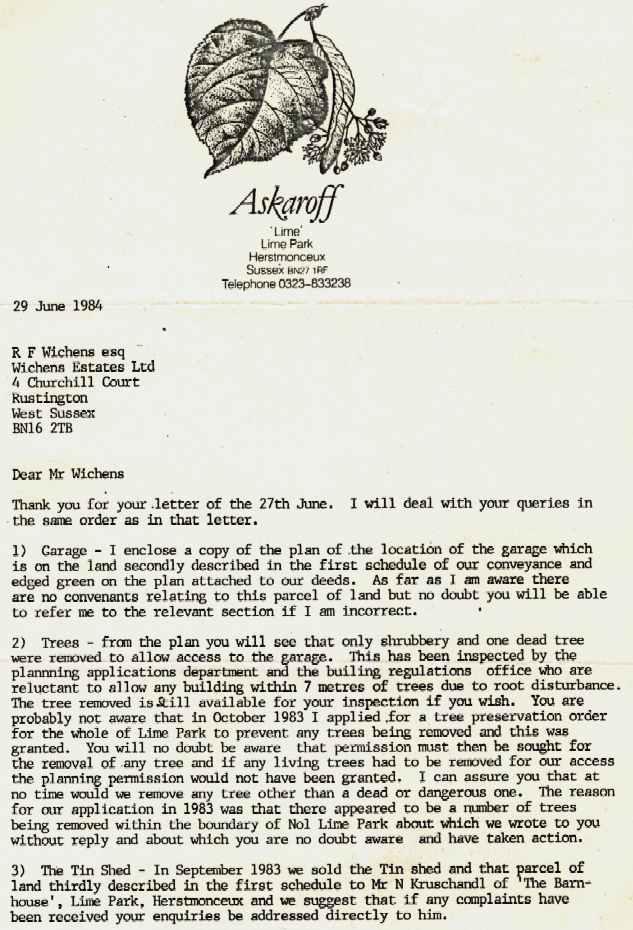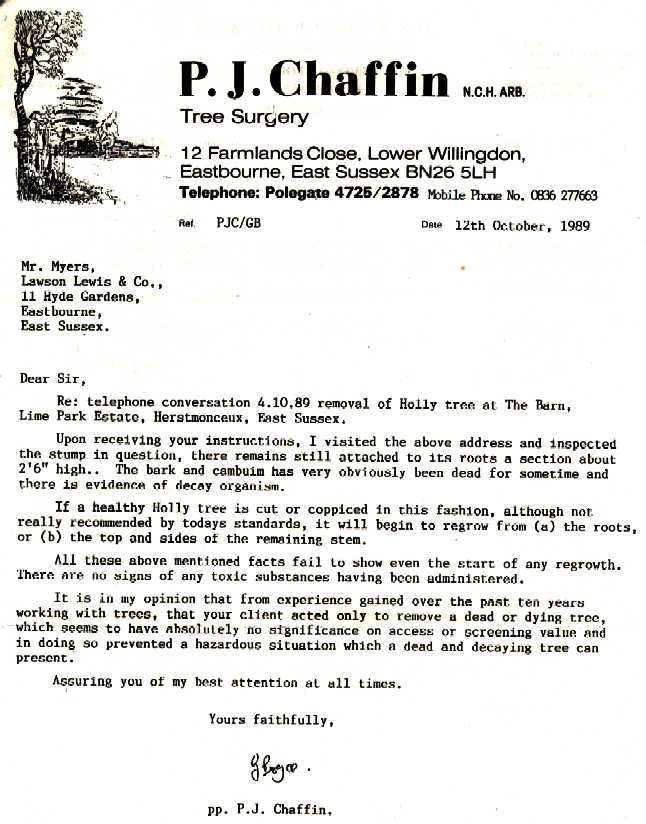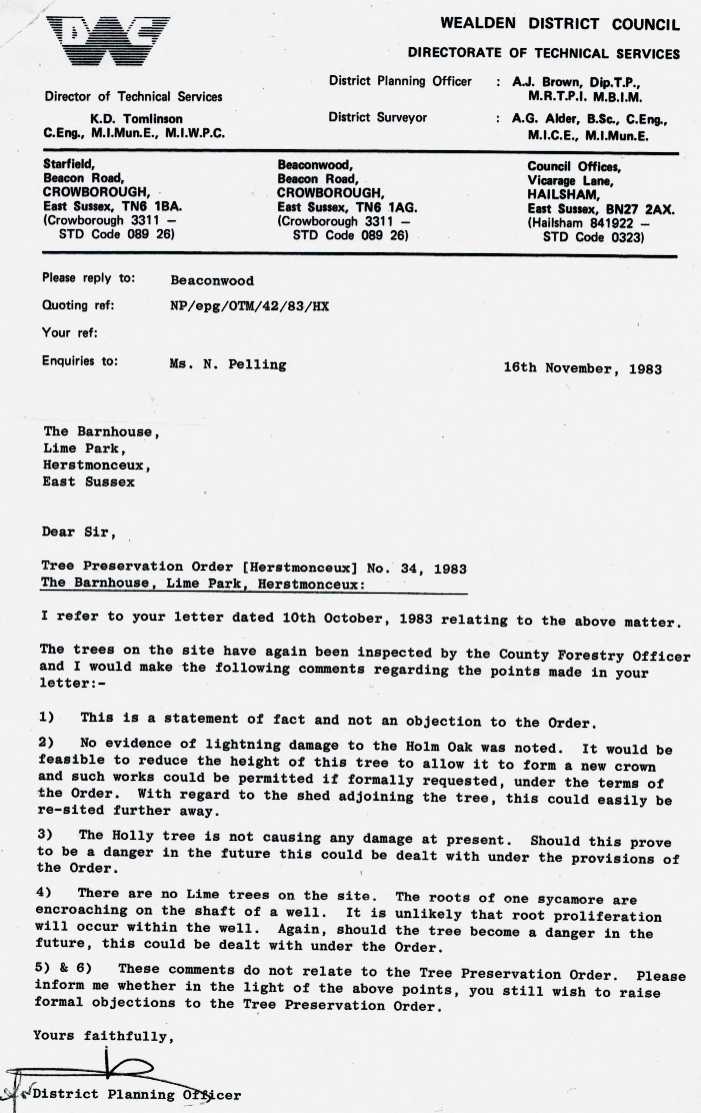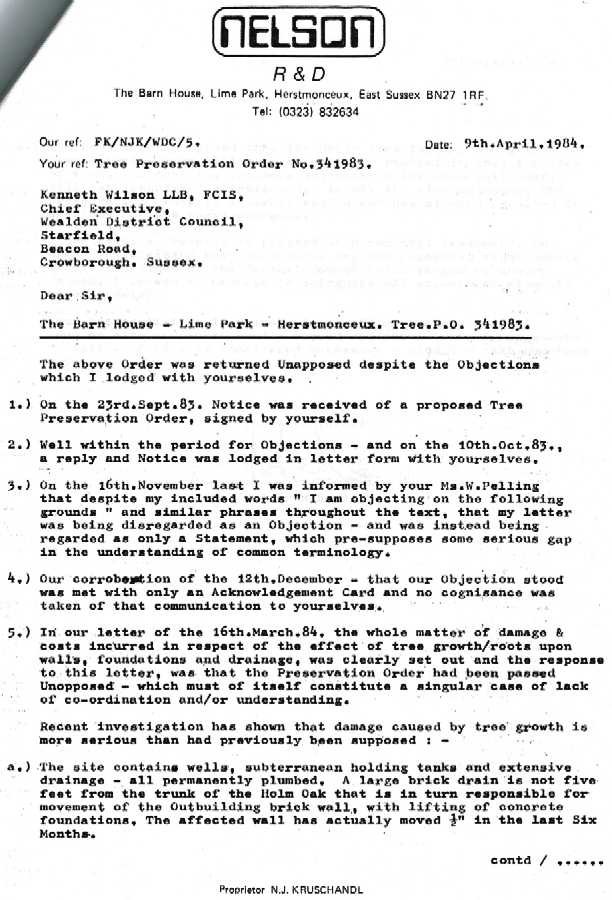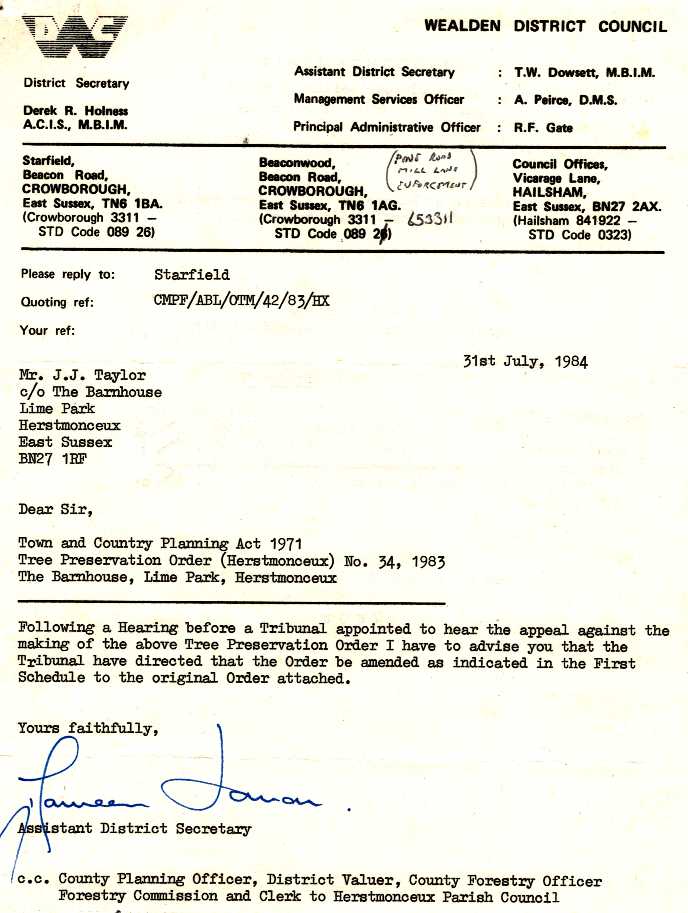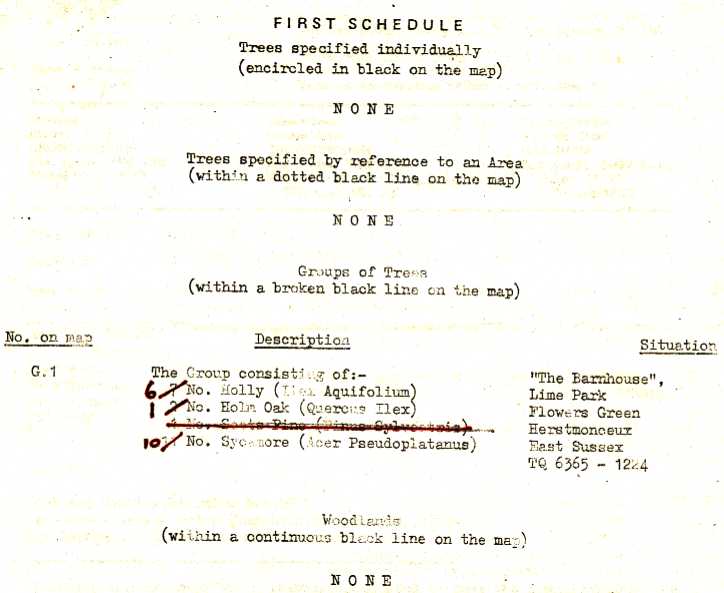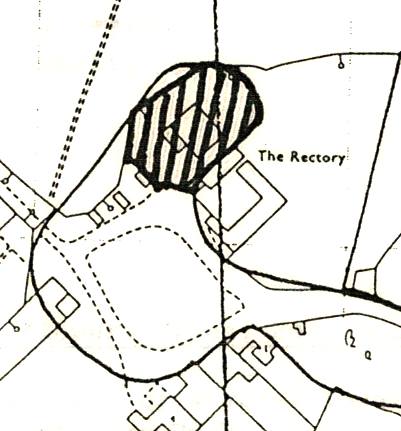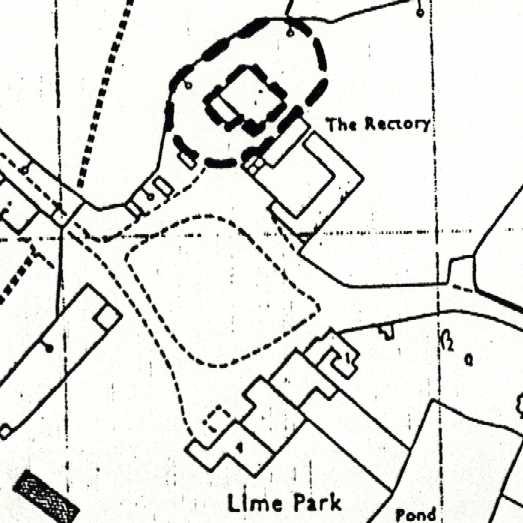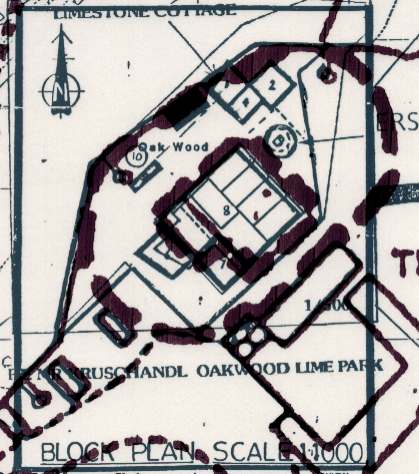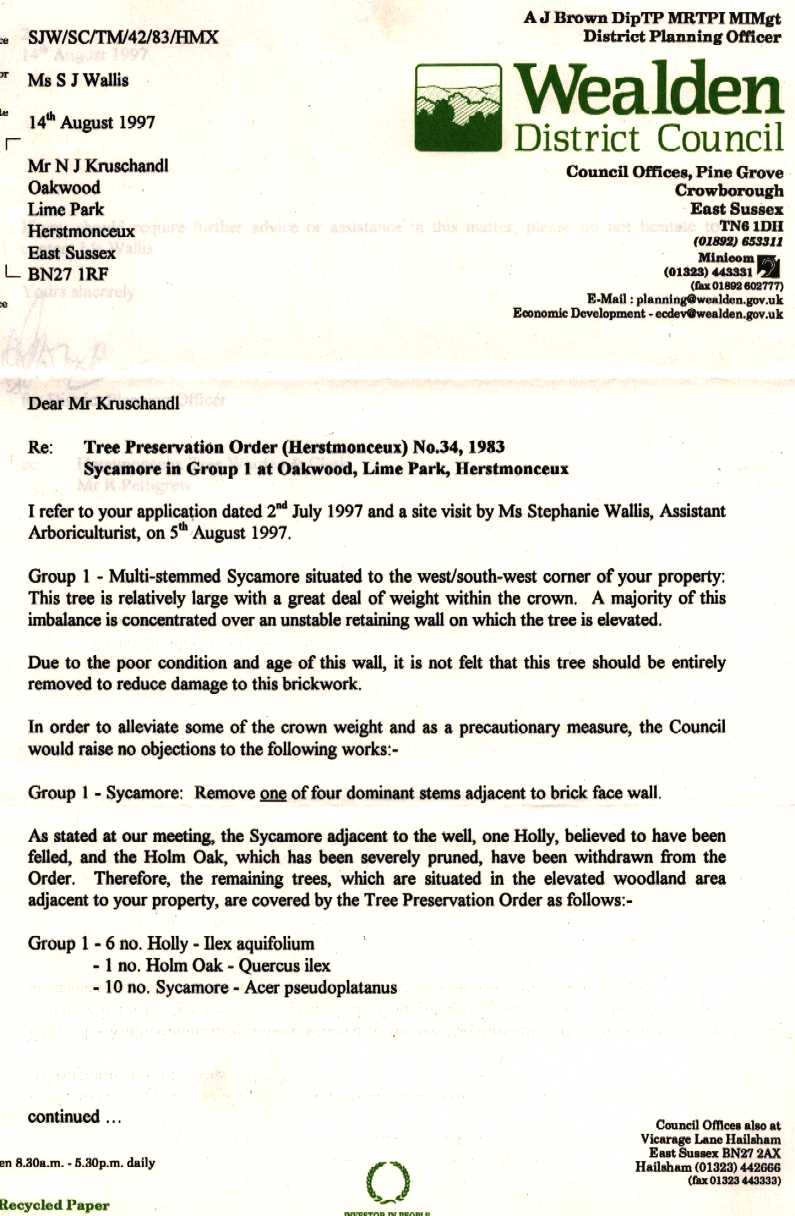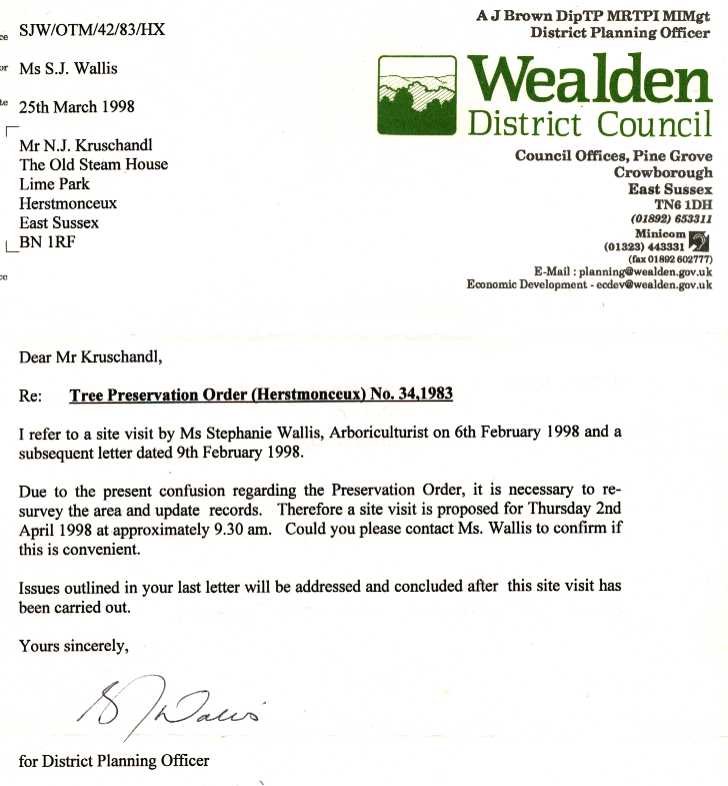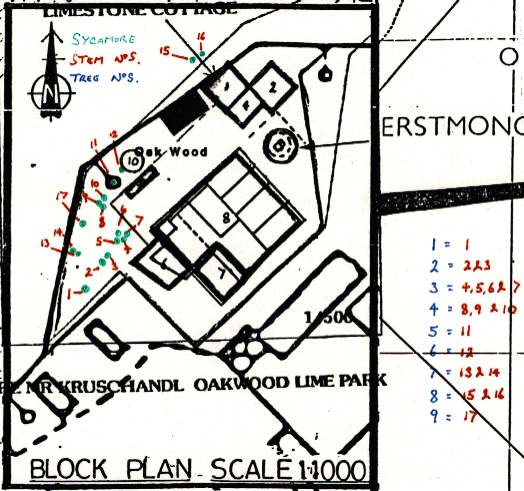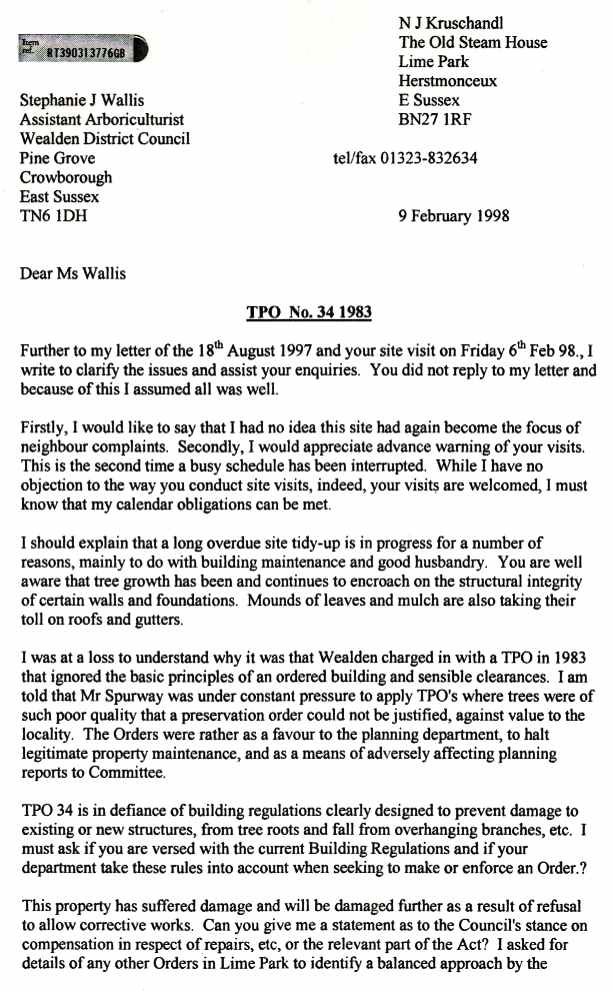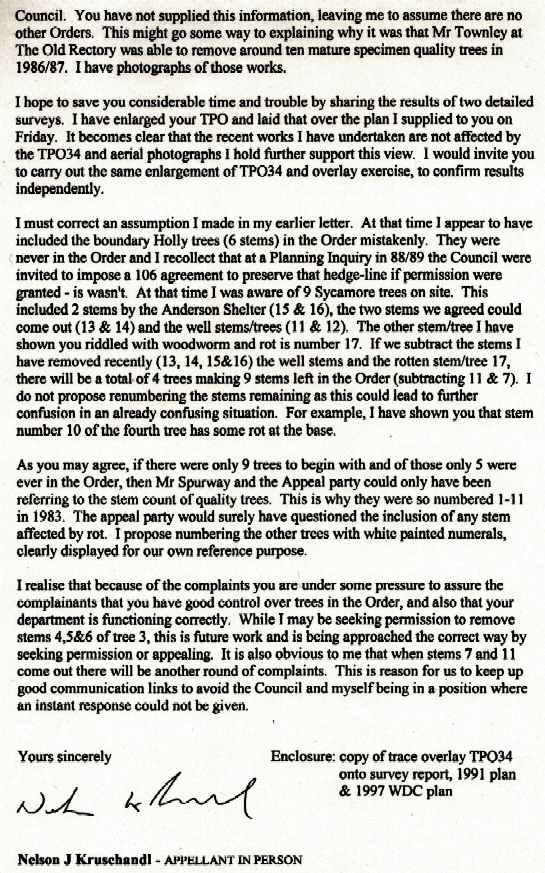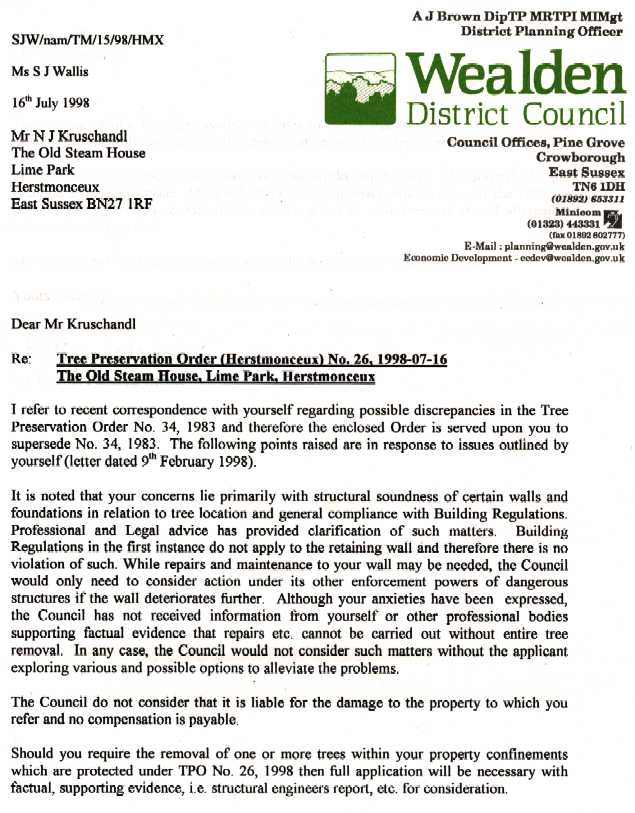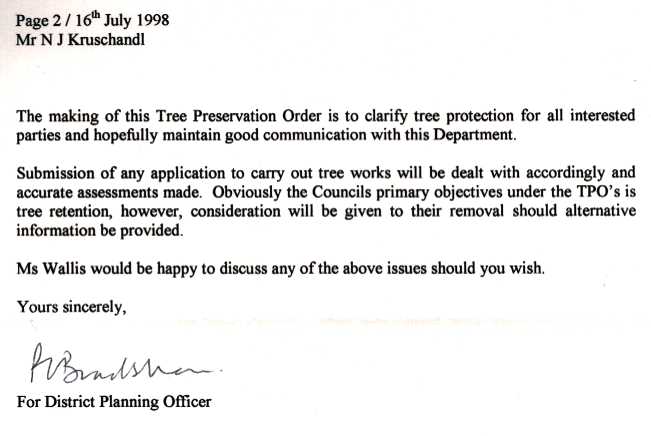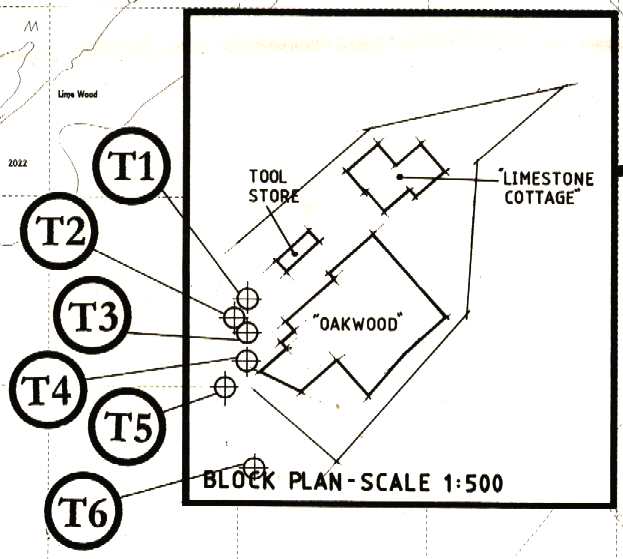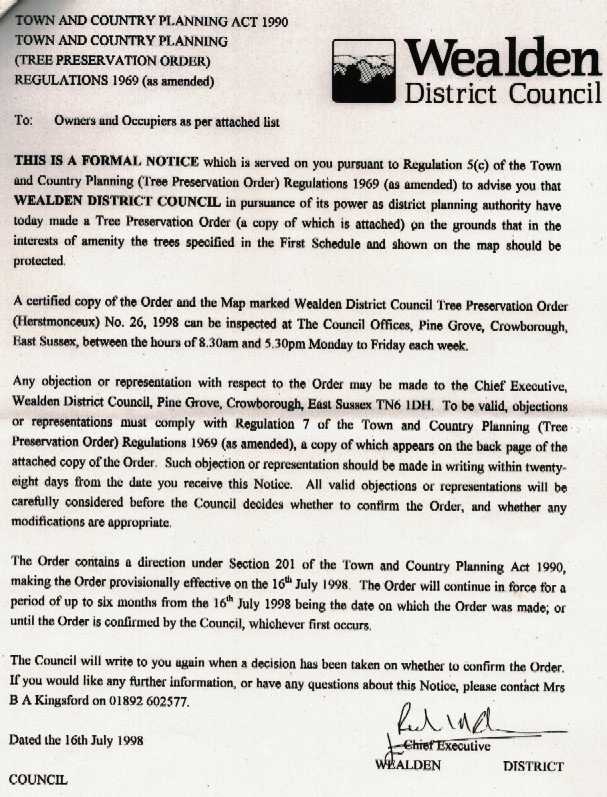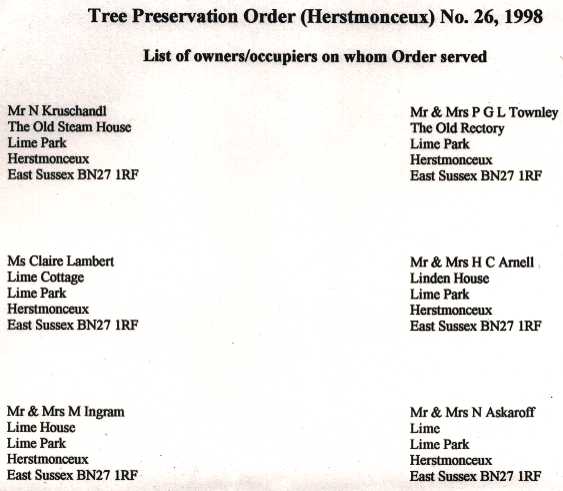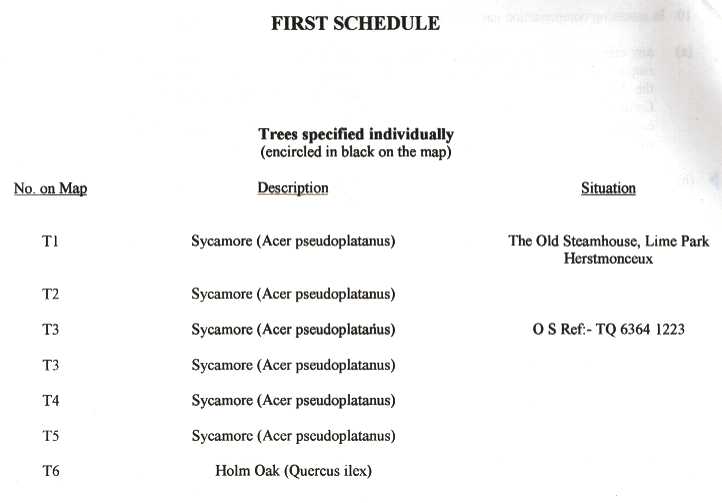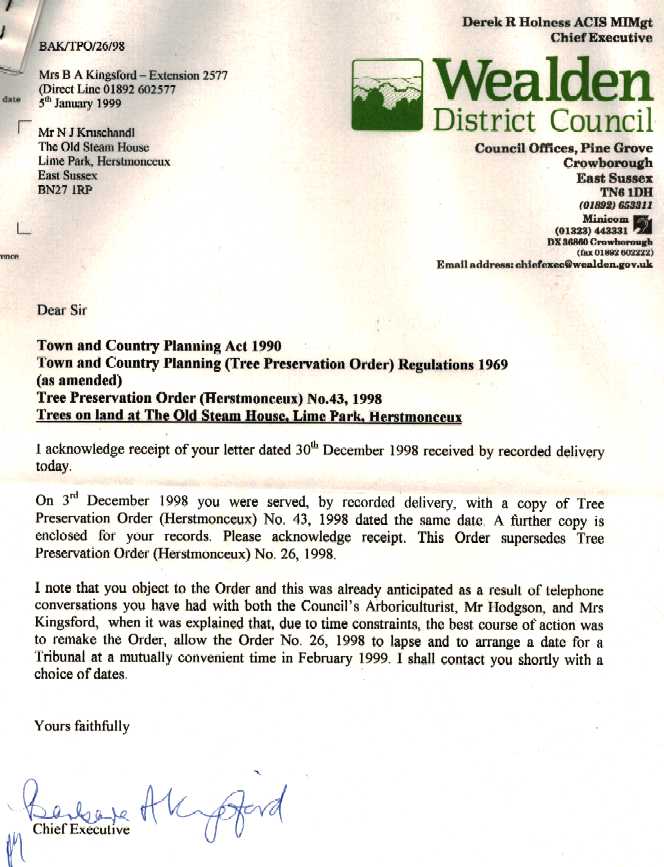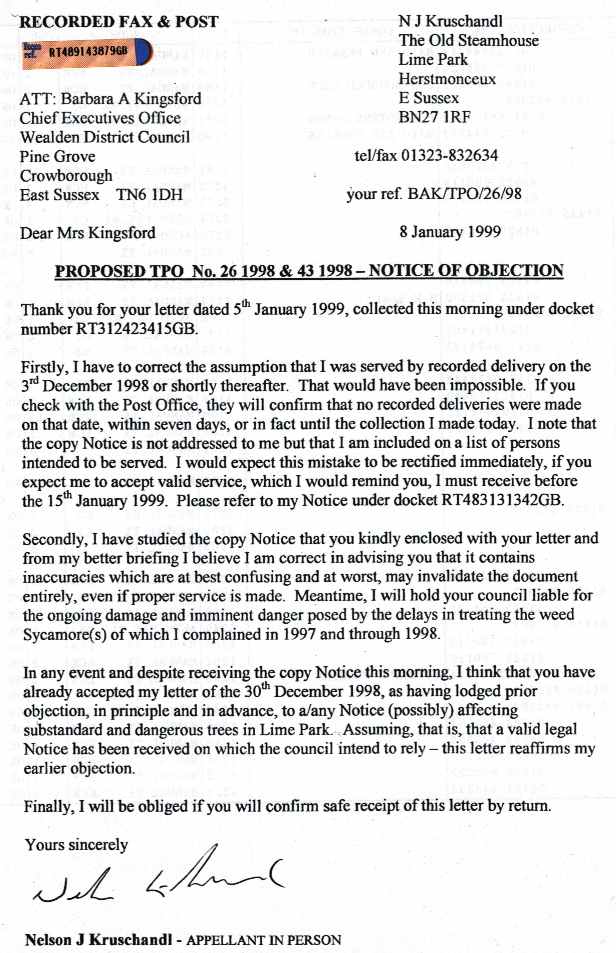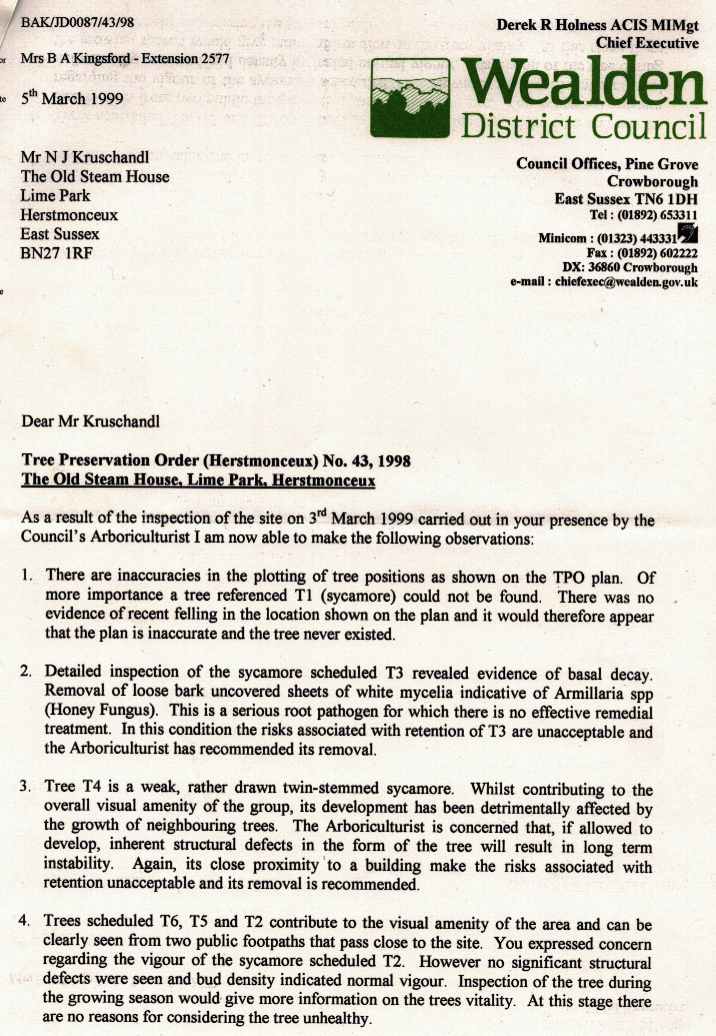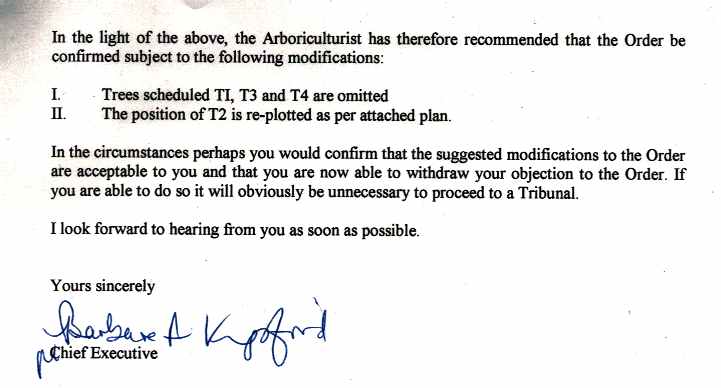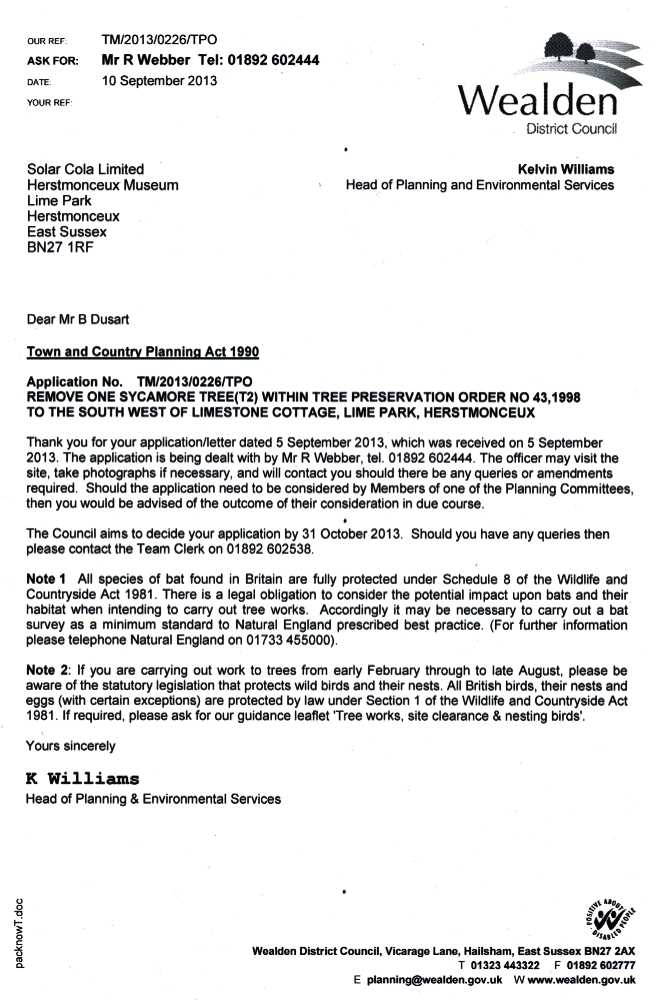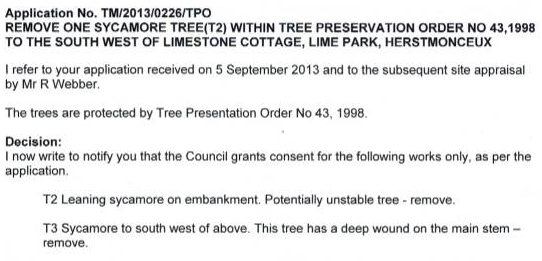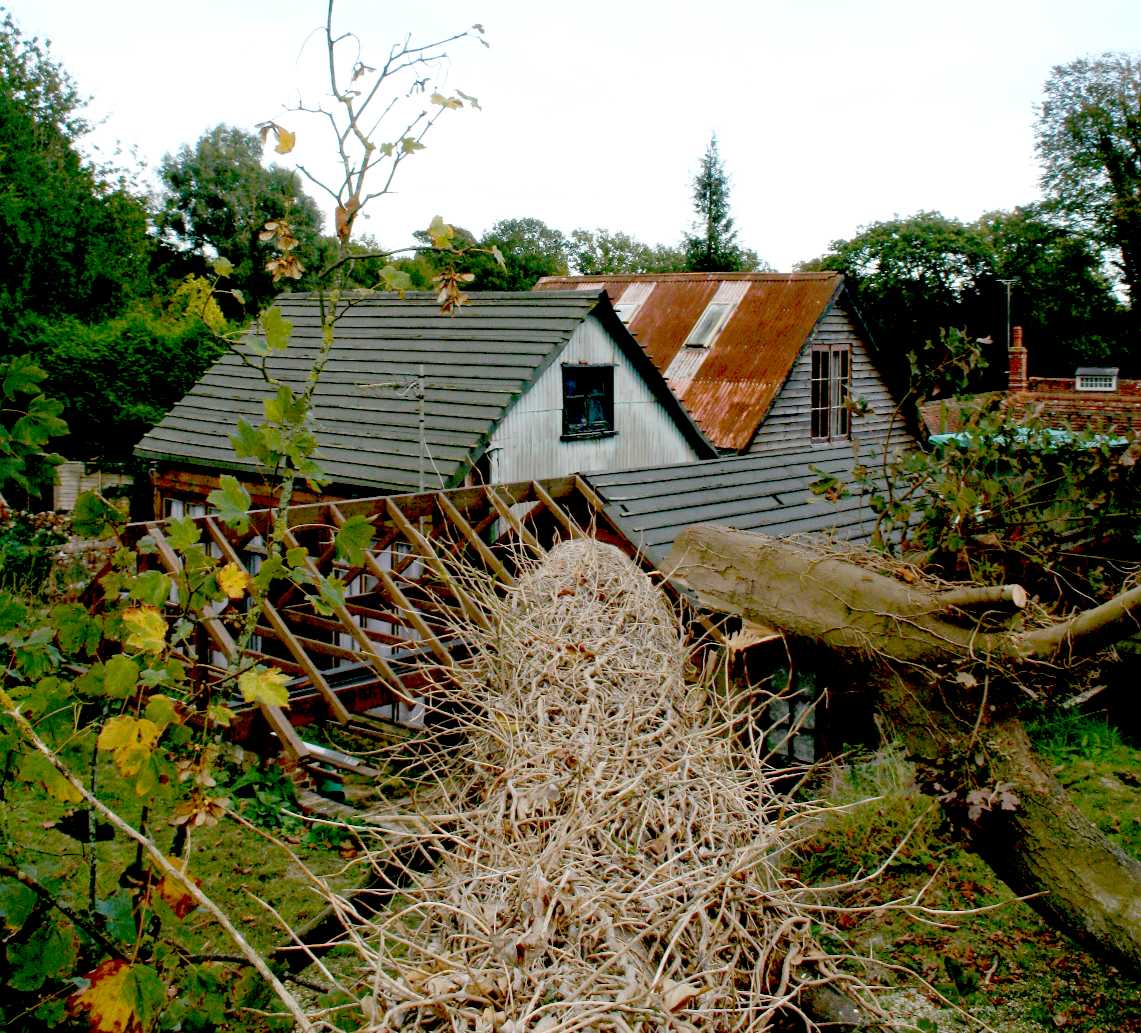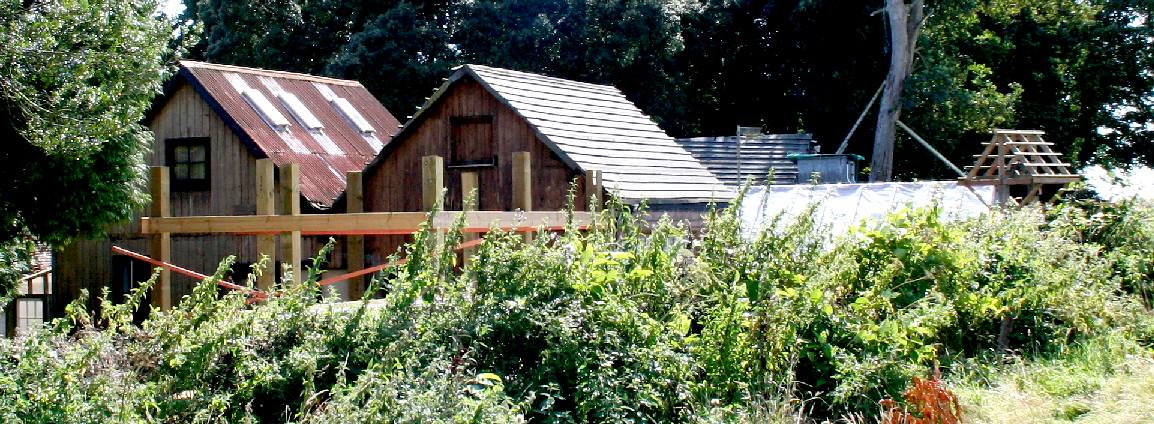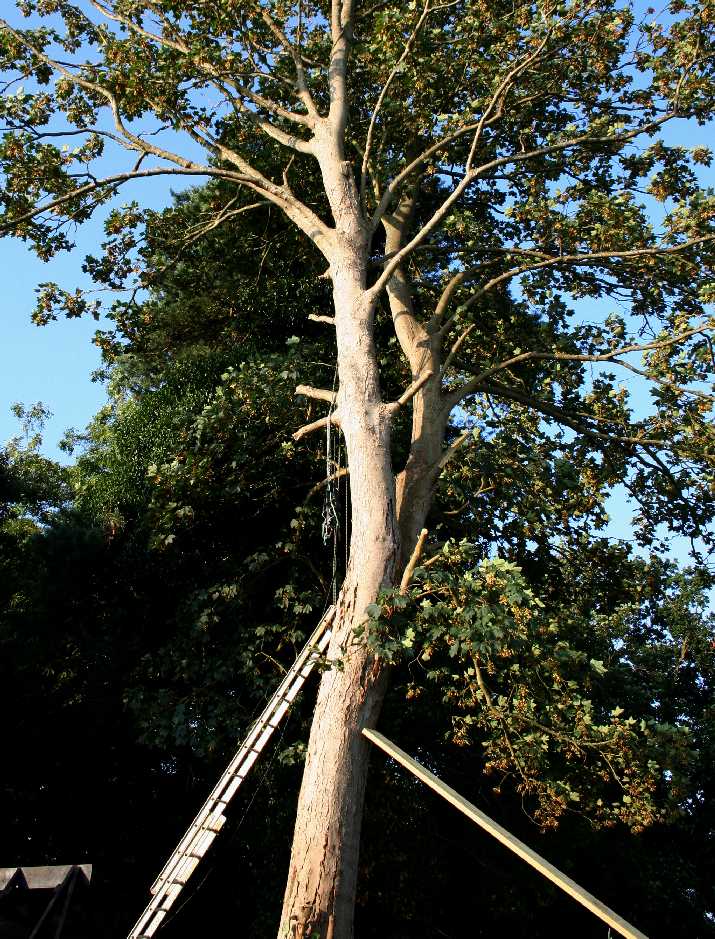|
TPO TREE SURGERY & PRESERVATION ORDERS LUMBERJACKS
|
|||
|
TPOs are sometimes used by unscrupulous councils to stop development, which care- taking should take place in the interests of good husbandry. Often, the arboriculturists in a council are instructed by the legal departments to issue a TPO against trees that should not be included, such as sycamores, which are of course weed trees that cause a lot of damage - as well local authorities know. In days gone by councils might get away with such abuses of their position of trust, but if you scan some of the findings of the Courts, you may find that compensation is payable if a heavy handed council tries it on. You might also consider looking at the Fraud Act 2006, when it comes to malicious TPOs that are designed to cause you loss - or do a favour for a neighbor - which amounts to the same thing. It has been alleged that the large sycamore on the left was included in a TPO by Wealden District Council to cause the then owner of Herstmonceux Museum, as much aggravation as possible. One look at the courtyard wall would tell any reasonable person, that this tree was causing serious damage to the brick built retaining walls just a few feet away. This is a true story, and sadly, there are many more like it. We hope to tell it in good humor with practical tips for landowners as to how to recover the right to look after your patch, free of interference. See Article 8 HRA Act 1998 and Section 6 (1). According to our human rights consultant, It is unlawful for a council to violate a European Convention right. Article 8 is a Convention Right and prohibits interference with your private life and home. Article 1 of the 1st Protocol provides for peaceful enjoyment of property. The service of a nuisance Order violates a persons Convention Rights by virtue of being interference in peaceful your enjoyment.
TREE PRESERVATION ORDERS (TPOs)
TPOs are administered by Local Planning Authorities (LPA) (e.g. a borough, district or unitary council or a national park authority) and are made to protect trees that bring significant amenity benefit to the local area. This protection is particularly important where trees are under threat. What is not published is that councils routinely serve notices against trees that provide little or no amenity value. This is part of the hidden cost of obtaining planning permission, or carrying out building works, that makes the United Kingdom so impossibly expensive for young couples to begin a life here.
What is so difficult for us to understand is how and why ordinary men find their way into top paid jobs in councils, then appear to think that they are the elite and that the rights of the little man are of no consequence. Having obtained such positions, it seems that the likes of District Planners believe themselves to be better than the public they serve. That is the only conclusion that we could reach, having reviewed the case of Herstmonceux TPO 34 of 1983, and the events that flowed from there.
We feel that it is our duty to publish what we have read, in the hopes that it might serve as an object lesson to other councils that what you do today that is wrong for a quick fix, will come back to haunt you in the long-term. That being the case, surely it is better to do what is right?
WHAT CAN BE PROTECTED
All types of tree, but not hedges, bushes or shrubs can be protected, and a TPO can protect anything from a single tree to all trees within a defined area or woodland. Any species can be protected, but no species is automatically protected by a tree preservation order.
A TPO is a written order, which in general, makes it a criminal offence to cut down, top, lop, uproot, willfully damage or willfully destroy a tree protected by that order, or to cause or permit such actions, without the authority’s permission. Anyone found guilty of such an offence is liable. In serious cases the case may be dealt with in the Crown Court where an unlimited fine can be imposed.
To make an application to carry out tree works you will need to complete an application form and submit it to the LPA. The form can either be submitted through the Planning Portal or directly to the LPA. You can find out more about TPOs in the Department for Communities and Local Government guide titled Protected trees: A guide to tree preservation procedures. You might also find it helpful to seek the advice of a tree surgeon prior to making an application. A directory of Arboricultural Association Approved Contractors can be found here.
The
Holm oak (Quercus ilex) is an evergreen broadleaf tree native to the Mediterranean region.
It was introduced to Britain in the late 1500s for parks and gardens.
This species is resistant to sea salt-spray. However, during cold winters they are prone to dying or losing
leaves, hence are more common in the south.
Conservation Areas
Normal TPO procedures apply if a tree in a conservation area is already protected by a TPO. But if a tree in a conservation area is not covered by a TPO, you have to give written notice to the LPA (by letter, email or on the LPA’s form) of any proposed work, describing what you want to do, at least six weeks before the work starts. This is called a ‘section 211 notice’ and it gives the LPA an opportunity to consider protecting the tree with a TPO.
You do not need to give notice of work on a tree in a conservation area less than 7.5 centimetres in diameter, measured 1.5 metres above the ground (or 10 centimetres if thinning to help the growth of other trees).
You can find out more about trees in Conservation Areas in the Department for Communities and Local Government guide titled Protected trees: A guide to tree preservation procedures.
Trees and the planning system
Under the UK planning system, LPAs have a statutory duty to consider the protection and planting of trees when granting planning permission for proposed development. The potential effect of development on trees, whether statutorily protected (e.g. by a tree preservation order or by their inclusion within a conservation area) or not, is a material consideration that is taken into account when dealing with planning applications. Where trees are statutorily protected, it is important to contact the LPA and follow the appropriate procedures before undertaking any works that might affect the protected trees.
Planning conditions are frequently used by LPAs as a means of securing the retention of trees, hedgerows and other soft landscaping on sites during development and for a period following completion of the development. If it is proposed to retain trees for the long term then a TPO is often used rather than a planning condition. If valid planning conditions are in place then anyone wishing to undertake work to trees shown as part of the planning condition must ensure they liaise with the LPA and obtain any necessary consent or variation.
The nature and level of detail of information required to enable an LPA to properly consider the implications and effects of development proposals varies between stages and in relation to what is proposed. Table B.1 of British Standard 5837:2012 Trees in relation to design, demolition and construction – Recommendations provides advice to both developers and LPAs on an appropriate amount of information that will need to be provided either at the planning application stage or via conditions.
For further information you are advised to contact either your LPA or to seek advice from an Arboricultural Association Registered Consultant from the list which can be found here.
Felling Licences
Felling Licences are administered by the Forestry Commission. You do not need a licence to fell trees in gardens. However, for trees outside gardens, you may need to apply to the Forestry Commission for a felling licence, whether or not they are covered by a TPO. You can find out more about felling licences at Felling Licences quick guide (England) or in the Forestry Commission’s booklet Tree Felling – getting permission.
Sites of Special Scientific Interest (SSSI)
SSSIs (ASSIs in Northern Ireland) are designated by the Statutory Nature Conservation Organisation (SNCO) for each country of the United Kingdom. They include some of our most spectacular and beautiful habitats - large wetlands teeming with waders and waterfowl, winding chalk rivers, gorse and heather-clad heathlands, flower-rich meadows, windswept shingle beaches and remote uplands moorland and peat bog. Each SSSI will have a management plan and a list of operations requiring the SNCOs consent prior to carrying out works.
Any activity that recklessly or intentionally harms the SSSI (ASSIs in Northern Ireland) or its flora or fauna will be an offence liable on summary conviction to a fine not exceeding £20,000 or on conviction on indictment to an unlimited fine. If you know the name of the Site of Special Scientific Interest and want to know more about it, you can search for it by country at England, Wales, Scotland or Northern Ireland.
Restrictive Covenants
A restrictive covenant is a promise by one person to another, (such as a buyer of land and a seller) not to do certain things with the land or property. It binds the land and not an individual owner, it "runs with the land". This means that the restrictive covenant continues over the land or property even when the current owner(s) sells it to another person. Restrictive covenants continue to have effect even though they may have been made many years ago and appear to be obsolete.
Covenants or other restrictions in the title of a property or conditions in a lease may require the consent of a third party prior to carrying out some sorts of tree work, including removing trees and hedges. This may be the case even if TPO, CA and felling licence regulations do not apply. In which case it may be advisable to consult a solicitor before creating potential problems.
This is what a TPO Notice looked like in 1983. You will see that in the third paragraph the recipient is advised of their right to make representations to the Chief Executive, at that time Kenneth Wilson, within 28 days from the date of service of the Notice. On the 10th of October 1983, a letter was sent to this council clearly stating the grounds upon which objection was being made. Though the letter was well within time, this council's response was to deny that the letter constituted a valid objection.
This is the letter that was sent to Wealden by way of objection. Not only is the word 'Objection' clearly installed, but considered grounds are given. This council then sought to ignore the objection as per their letter below dated the 16th of November 1983.
You can see from this photograph Circa 1983, that there were sycamore trees growing from within a historic coal bunker. The trees had partially pushed over the south facing wall and completely undermined the brick built structure. It was much the same all over the site. If left untreated the fauna would have completely overrun what is now Herstmonceux Museum. Why anyone would wish to put a spanner in the works to prevent conservation works is a mystery. It seems that it is not what you know, but who you know. It is though obvious from such pictures that the work being done on site was more than justified. Coal was delivered by carts and lorries across the adjacent field, witnessed by a Deed entry for the right of way.
1984 - From this letter found on file at Wealden's offices, it appears that the then owners of Lime, the most westerly wing of the manor house (now divided into four), were being canvassed as to their tree removals and those of Herstmonceux Museum, then known as the 'Barnhouse.' To be clear, we consider that both parties were acting in good faith, simply to look after their respective properties. It is unclear if Mr Askaroff was involved in seeking the TPO above, or if the TPO he refers to for Lime Park is another Order.
1989 - From about 1987, Lime Park Estate Limited (LPE) was formed, taking over from Wickens Estates Ltd. On the merry-go-round of pot shots at the owner, it was now their turn to seek to hinder progress on the site. The directors of LPE issued proceedings against the then owner, claiming damages for the removal of a holly tree, in breach of a Deed Covenant. As you can see from the above letter to the owner's solicitors, Lawson Lewis & Co., the holly in question was dead. Rather amusingly, it transpired that after a survey, that not only was the holly dead, but it was not even within the boundary of Lime Park, hence, LPE had no business seeking damages in the first place. The directors of LPE at the time are a matter of public record, and included Peter Townley (The Rectory) and Henry Arnell (Linden House), among others. These gentlemen are on record as wanting to purchase the site, and in Henry's case, bulldoze it. Such neighbors are a conservationists nightmare. The case never got to court. Rather sheepishly, LPE simply did not progress matters until it was struck out. Think though of the wasted costs and time. P J Chaffin Ltd offer an excellent service and may be contacted at: Chapter House, Priesthawes Farm, Hailsham Road, Polegate, East Sussex, BN26 6QU. Telephone 01323 768180 Email: info@pjchaffin.com
TREE PRUNING
Tree Pruning (Tree Cutting) Crown Lifting
A REAL TRUE LIFE TPO CASE HISTORY
1983 - The obstinacy of some councils is staggering, bordering on stupidity. Firstly, this TPO concerns a historic building, about which Ashley J Brown, the District Planning Officer, failed to either take into consideration, or ask the County Archaeologist, or English Heritage for advice. The signature on this letter is that of Ian Kay, an officer that was involved in the unlawful Bushywood Animal Sanctuary demolition, and many other dubious cases where Wealden's moral compass in known to have been 180 degrees out of kilter.
As you can see for yourself, the then owner had written a letter dated the 10th of October 1983, in which he states: "I have to acknowledge receipt of letter dated the 23rd of September 1983 with accompanying Tree Preservation Order to which I am objecting on the following grounds:- "
This is a verbatim quote, including the underlining of the words I am objecting. Plainly, Mr Brown and Mr Kay were not used to being challenged and appear to have thrown all their toys out of the pram at the merest hint that they might be wrong. This is the same A J Brown that led a campaign to hide the archaeology of the Museum building and prevent a beneficial use over some 20 years - regardless of the facts. Mr Brown is recorded as refusing to accept the history of the building, even when English Heritage had placed it on a Monument Protection Program. We hope, that along with our readers, Wealden District Council can see the funny side of this - and perhaps learn from their mistakes. We would suggest an audit of officers where a member of the public shows them to be wrong time and time again. They audit the performance of schools, why not councils. And why not a a fraud squad dedicated to malicious planning blight.
The so-called "shed" that Mr Brown refers to has a substantial concrete base, 9" brick walls that are linked to brick courtyards, glazed clay pipe drainage, and is historically recorded as a store for the firewood in the works of Augustus Hare. The store building is substantial in size. It stored faggots that were used to light the boilers for the gas and steam machinery on site. The Holm oak complained of had split one wall in two, pushing the parts open to form a gaping breach. The building could not thus be moved as rather flippantly suggested. Additionally, the Holm Oak referred to had been (obviously) damaged by lightning as a later site visit confirmed, where a bough from one tree (that had been struck) was caught up in the crown of a neighboring Holm oak. All along Wealden's planning and legal departments were living in cloud cuckoo land. Like a naughty puppy they forced the owner to rub their noses in the pooh that they had made for themselves. In so exposing the officers who had been caught out, those officials did not apologize, but instead of saying sorry, looked for other means to obstruct conservation. Their motive looks to us to be revenge for pointing out their error - plain and simple. In those days there was no internet, letting councils, more or less, do as they pleased. Naughty puppy.
1984 - Here is a copy of the letter dated the 26th of March 1984, confirming the Unopposed Tree Preservation Order number 34. If we had not seen this letter with our own eyes, we would not have believed it. But here it is, in black and white. Objection had been lodged in writing as is plain from the letter above dated the 10th of October 1983.
1984 - We have found that those who make out a good case, and simply re-affirm their argument, will eventually bring a naughty puppy back to the litter tray. It may take some patience, but keep writing, even stating the obvious, and eventually the bad dog will have to take notice. If they do not, there are several methods of appealing misfeasance in public office, the first of which is the Local Government Ombudsman. With the LGO, misfeasance is referred to as maladministration. It all amounts to the same thing, but a finding of maladministration will not get a repeat offender removed from council offices. Council officers know that and rely on people not being able to take action against fraudsters, to keep their jobs. In our humble opinion, Immunity such as this should not be allowed. The last straw is a Judicial Review. But beware of that. Single Judges in the UK have to give permission for a JR to proceed and the courts favour councils, so rarely grant permission, unless a QC barrister is in the works. In other words, English law is for the rich only. You might think that that is a violation of Article 14 (discrimination against the poor), and you may be right - but there we are. Dear old Queen Victoria, with her vision of equality at law for all the people, is getting further away than ever before, now with Legal Aid withdrawn for just about all cases. And that is in itself a violation of Article 6.
1984 - As you can see it took some doing, dragging the naughty puppy to a Tribunal to have its nose rubbed in its own faeces. But, eventually the 1983 Order was changed, thanks to a site visit when the facts could not be fudged - with 3 trees out of 20 removed at the first bite (see revised schedule below). We recommend that if you are faced with such a ridiculous Order, that you tackle it one stage at a time. Councils like to cost ratepayers and developers money. The way to beat them is to engage using their own tactics against them, and start costing them money [See: The Art of War by Sun Tzu].
Treat it like a game of chess and turn the other cheek. Be prepared to take a few slaps, with each slap eventually going against the council concerned. Chapter 3, Sun Tzu quote:
"So it is said that if you know your enemies and know yourself, you can win a hundred battles without a single loss. If you only know yourself, but not your opponent, you may win or may lose. If you know neither yourself nor your enemy, you will always endanger yourself."
The average man on the street will not know the makeup of his council or their relationship with near neighbours. Take time out to learn. You are fortunate today to have the internet. In 1983 there was no such thing. Council's were a closed shop - for members only and mates of members. This was of course a recipe for corruption recognized in the (Lord) Nolan Committee Report. We mention this for good reason, because just this one TPO case history reveals everything that is bad about local authorities. As you read on you may realize, as we have, that there should never have been a TPO in the first place.
On further examination this Order proved to be seriously defective. But, our expert only picked up on that after surveying the site with a tape measure - when looking at the proximity to the well on site and one tree in particular that was leaning over the Museum building - worried that it may fall down. Insurers took one look at that potential hazard and refused buildings insurance.
The problem with this and many other councils, is that they get things wrong and once that happens they will stoop to almost any tactic to hide their mistakes, digging themselves a bigger hole. Compare the original site plan on the left, with the one on the right, and you will notice that they have omitted the fence line, changing it to make it look as if their dotted oval was right up to the boundary. Wealden have been known to alter plans in this fashion where litigation is concerned. We thought at first it must be an isolated error - but we were shown other cases involving other sites.
Once the innocent looking site plan above was looked at with a fine tooth comb and compared with the attached 'First Schedule,' it was realized that most of the holly and sycamore trees were outside the plan - hence, not covered by the TPO. The counting of the sycamores also left a lot to be desired. The numbers simply did not add up. All it took was to overlay the original site plan with a transparent overlay drawn correctly and things became clear (if you'll pardon the pun). Any tree not within the boundary could legally be removed. Many species not mentioned in the Order were taken down as a precaution, fearing that they would be included if this council continued with their objectionable behavior. The puppy was still not house trained and needed another lesson in good manners.
1997 - To give Wealden a chance to see their error, our curator asked for three sycamores to be removed from the TPO 34. He wrote to the council in 1997, where being un-insurable was now a major problem. The insurers were most helpful in putting their concerns in writing, by way of evidence for a second appeal, should that have been necessary. Our advice here is to prepare for an appeal and then be prepared to follow through. We know it costs a lot in time, etc, but that is what councils bank on. They gamble that most people will knuckle under. While you are at it, why not also take away the costs element upon which most councils' rely on as a means to obtain land charges and break an opponents will, otherwise, if you lose, costs might then be used against you to obtain your land at an undervalue. Using the same system (corporate) the council use, will level the playing field in the war of nerves. We'd suggest using a limited company to make any application.
1997 - Wealden, still with Ashley Brown at the helm, refused the outright removal request. At this time unaware of the insurance issue and not realizing that some of the trees were outside the TPO perimeter. This included 3 holly trees. The lesson to be learned here is to make a reasonable request without revealing your hand and let the council fall into yet more poop. You need to be a good card player. Our curator turns into Daniel Craig in Casino Royale when playing poker with councils like Wealden. Still, he felt that more potty training was needed for this incontinent council. Especially as Mr Brown was known to be an amateur archaeologist - and he was obviously keeping mum about the Museum, referred to in these letters as "Oakwood.," being a historic building. As we said, this is a game of chess/poker with each player not telling the other side what they knew. The difference is that Wealden owed the owners of the building a 'duty of care,' and were failing to do their job properly. You think we had problems with the Russians during the Cold War!
The problem looming for Mr Brown, was that English Heritage, working with the then County Archaeologist at East Sussex County Council (ESCC), would soon (in 1998-99) reveal the truth about "Oakwood." As Jim Carrey said in Liar, Liar: "The truth will set you free." And that 'truth' was about to give the Trust's curator another squadron of puppy trainers to send against the Hun in Pine Grove. The s--t was about to hit the fan. All in good time.
1998
- It
is the function of the County Archaeologist to: "Produce maps of archaeologically sensitive areas to advise the East Sussex District
and Borough councils on where planning applications are likely to affect archaeology.
ESCC give advice on the work required to ensure that archaeological remains are recorded and, where possible, preserved.
Ms Stephanie Wallis was at the time this council's arboriculturist. A head count was conducted in April 1998 during which it was found that whoever had compiled the TPO in 1983, had been counting stems as trees, rather than stems from one tree, as just one tree. At least that is what it seemed from the above plan provided to the council and agreed during one site visit. It is also clear from the above plan that more than one sycamore and several holly trees were outside the TPO perimeter. Ms Wallis took careful measurements witnessed by our curator and agreed that that was so. There were not 10 sycamores on site and two of the 9 were outside the TPO, making 7 sycamores to deal with.
Of the 3 holly trees in a row, one became unstable in 1985 and fell over, it being affected by disease - confirmed by local tree surgeon P J Chaffin. A second holly blew over in the 1987 storms. A third had died and became so dangerous swaying in the wind, that it had to be cut down. Two other holly trees were outside the TPO.
Obviously, those trees that were identified as being outside the plan were immediately taken out of the equation, to prevent additional nuisance TPO service. Our consultant advises that when playing against a deviant council, that you should have a friendly tree surgeon on hand with a chainsaw revved up and ready, to be able to take immediate action. Record everything (conversations) and send all post by Royal Mail using their recorded delivery service. Do not rely on emails that a council can later deny receiving.
The discovery and confirmation of the inconsistencies in this TPO were raised in further correspondence through 1998 into 1999. Wealden's 'Tree Warden' was Rex Pettigrew. It seems that the condition of the trees and their natural demise had not been monitored as well as it might have been.
To be continued ......... We learned that Ms Walis returned to New Zealand soon after this round of negotiations. We do hope that her departure was not because she was arguing that these trees should not have been in a TPO.
1998 - Insurance was not possible because of the dangerous position of two sycamore trees and the damage they had done to the retaining (courtyard) brick wall. Despite Wealden's protestations as to not being liable, if they are responsible for bringing about a situation that could lead to nothing but destruction of property - they are indeed liable by way of negligence in their duty of care to the historic built environment.
This was the curator's follow up letter to Ms Wallis dated the 9th of February 1998. Note that the recorded delivery number is a stick on label. They don't use those anymore, sadly. It is clear from recordings of committee meetings that Wealden's planning officers were using the existence of the TPO as a character assassination tool, aimed at defeating planning applications that were at that time being made. No longer, since the expense is considerable and pointless with such disgraceful tactics being used routinely by a hard core of long-serving officials seeking to protect their pensions, by not being caught out.
16 July 1998 - As a result of the examination of the site, and after realization that many of the trees in the original order had been either blown down, subject to rot, or were simply not inside the boundary plan, Wealden issued TPO number 26, which superseded TPO 34 of 1983. Trees T1 - T5 on the attached Site Plan were Sycamores. Tree T6 is a Holm oak. The above letter was written by Clifford Bradshaw, according to the signature.
16 July 1998 - This is the relevant extract of the Site Plan attached to TPO 26. From 20 trees in 1983, we are now down to 6 trees. This council forced the occupier to remove much of Limestone Cottage, even where the brick and stone foundations clearly identified the form of what was a converted piggery and 2nd World War Anderson shelter. Our hero was not though happy with this outcome, because T3 was leaning over the main generating buildings, which were now uninsurable. He had no choice but to appeal. The tide was turning, and as we mentioned above, this council's fouled litter tray was about to receive a dose of constipation treatment, with a little help from a group of archaeologists, whose job it was and is to identify and preserve historic buildings - or rather, clarify the historic position for council's who have difficulty identifying finds on their doorstep.
In fairness to the arboriculturists working for this council, they probably were not given information of the history of the building, operating on blind trust on the instruction of the planning and legal departments. Planners and Lawyers in any council play the role of the Gestapo when compared to Hitler's administration. They are like traffic wardens - extremely unpopular. Please note the close proximity of trees T1 - T5 to the building. The general rule is that no tree should be within 30 feet of a historic building. So, how far do you think this group of trees are to the historic elements of the old generating works?
You can work out from the sheer volume of correspondence on just trees surrounding the historic generating buildings that this Council have it in for the occupier.
Now multiply that by the other elements of litigation and several planning applications and appeals - and you may care to agree that Wealden have made a career out of obstructing the occupier is some kind of state sponsored eugenics programme - designed to prevent persons that this Council deem undesirable from peaceful enjoyment of property, contrary to Article 1 or Protocol 1 of the Human Rights Act 1998.
FORMAL NOTICE - TPO 26 of 1998, was dated the 16th of July 1998. Once again, where a Notice is served, you should respond in time and clearly state your objections. The best form of defence is attack. At this point in time there were still defective trees in the old Order from 1983 and a ghost tree that was not there at all. Possibly, one that was well outside the old Order, or possibly one that was included by accident in a miscount. Who knows. Regardless of the reasons for error, a council owes the affected public a duty to get things right.
TPO 26 1998 - This is a list of those served under the order - all neighbours in Lime Park. At this time many neighbours in the Park had succumbed to the spin of this council, that there was no history attaching to the Generating Buildings. Maybe that was what they wanted to believe, or perhaps they just didn't care. Fortunately, there are those who are passionate about conserving our past for our future. Of this list Mr & Mrs Ingram moved to Heathfield. Mrs Arnell also sold up after Henry passed away (RIP) and Mr Askaroff is no longer resident in Lime Park, though he may have been instrumental in seeking the original Order.
TPO 26 1998 - This is a list of the trees that were suggested as being on the grounds within the boundary of the Order.
NOTICE OF OBJECTION - Lodged on the 30th of December 1998. Wealden had failed to Confirm the Order or make the arrangements for a Tribunal to hear Objections of the most affected occupier. In order to galvanize this council to action, it was necessary to take the bull by the horns and treat the trees. Negligence on the part of any council is a serious issue. Any losses arising from the threat of service of a TPO, or the actual service and confirmation of a proposed order, is actionable in law. Be sure then to keep pushing. Do not just sit there and do nothing, hoping it will all turn out okay. It won't. It will go against you in the long haul.
JANUARY 1999 - Into another year, and Wealden appear to have run themselves out of time with the proposed TPO number 26. Their solution was to serve further Notice in anticipation of Objection being lodged. By this time the council had been beaten at appeal by the curator and knew that he was more than capable of arguing a solid case. More to the point, the curator was appealing in person, so no costs were involved for the appellant. Costs are a major factor. Most ordinary people would not be able to afford to employ a town planner, let alone the army of specialists that it might take to win a case. For this reason most councils get away with blue murder.
JANUARY 8 1999, NOTICE OF OBJECTION - Never let a council get away with an assumption that you know to be wrong. Frequently notices are not served, which, if not challenged immediately as to the facts, will come back to haunt you. A council will argue that service was valid, when it was not - and they will get away with it because you said nothing at the time. A record of recorded delivery service should be checked and saved for future reference. The above letter reports non-service, and that fact alone might invalidate a Notice. Other facts might also invalidate the service of a Notice. Our advice is to check any Notices very carefully for any defect. Procedural irregularities could render any proposed Order ultra vires.
MARCH 5 1999 - A further site visit was held when Wealden's experts realized that the site plan attached was defective in including trees (ghosts) that were not physically as plotted, which, if incorrectly plotted in the legal sense never existed at all. If this matter had gone before a Tribunal, the appellant would have won and potentially, could have been awarded costs against the council's negligence.
From a supposed 20 trees in the original Order number 34 of 1983, we are now down to 3 trees remaining on site. But this is where things start to go wrong again for Wealden. Because, their planning and legal departments had been trying their best to cover up the history of the building. In fact ever since 1983. But other agencies who exist to protect industrial archaeology, are more concerned with uncovering the truth. The naughty puppy was about to get its nose rubbed in yet more of its own pooh. The puppy kept running away from the pile of rotting faeces it had created for itself and the curator kept on dragging the puppy, whining and yelping back for another nose dive into the quagmire. This is what is known as turning the tables.
It could be argued that in not carrying out a historic and/or archaeological evaluation of the premises in 1983, before service of any TPO Notices - and for the consideration of any subsequent planning application - that this council abused the basic human right of the curator, to a fair hearing. See Article 6 of the HRA 1998. In our opinion there is no argument about it, the curator's rights were violated, causing him huge anxiety and expense - and that of course interferes with his right to peaceful enjoyment.
September 5 2013, APPLICATION - Solar Cola Ltd., is one of the Trustees of the Museum. When Lime Park Heritage Trust found out about the dangers of weed trees to buildings, they were not amused. If you check on the web you will find out that sycamore trees are internationally recognized as invasive. No wonder then that they got the bit between their teeth - as seen in the argument/grounds for removal.
We don't know if you've noticed but investigations into crimes in the Wealden District is highly selective, even Petitions containing 12 unrelated complainants are not investigated by Sussex Police, not when it's their chums at Wealden who are to be investigated. At least one of the planning officers the subject of these twelve complaints was related to a mason.
AUGUST 30 2013 - The above letter was accompanied by an indexed bundle of exhibits that are available freely on the world wide web. It seems to us that the argument is a strong one and the the naughty puppy was about to get it's nose well and truly rubbed in the pooh - and that they knew it. It was not a set-up, but it might well have been.
It costs a few bob to mount such a comprehensive argument, but as the information was free from the internet, all it needed was some good photographs, and a rifle through the archives to extract the Monument Protection Program entry number, etc. Thus, even at £120 an hour, this application cost no more than £500, plus a bit extra for covering letters, etc. Should such matter go to appeal, in some cases where a council has, or is being unreasonable, costs may be awarded in favour of the applicant.
OCTOBER 28 2014 - As you can see from the Council's decision letter, trees T2 and T3 were removed from TPO 43 of 1998, leaving just one tree remaining in the Order, a Holm Oak designated as tree T6. T6 is on the southernmost west corner of the Museum premises. The tree had caused damage to a garage belonging to Camille de Kok, which she took down in late 2011, presumably because the foundations had become unstable and the wooden garage was not in any case in a sensible location. With this garage down the tree will do rather better than previously, which, no doubt will please Wealden District Council and the neighbours who asked for the tree to be protected way back in 1983. This tree has significant amenity value. According to the experts, it was the only tree that has any charm - and it would have been looked after in any event, with or without a TPO. What then the cost to the taxpayer of putting the other 19 trees in a Tree Preservation Order. Is that a sustainable practice. Is that a practice that keeps property affordable. Not on you life. Naughty Puppy!
On a lighter note, pray tell squire, what is a 'Tree Presentation Order?' Obviously a slip of the quill, but it had us rolling around in merriment, imagining a ceremony where the Chairman of the council concerned hands the tree owners a parchment, perhaps to a drum roll, followed by a banquet.
You may have noticed that the above consent was in connection with an application for just one sycamore to be removed. Now, just occasionally, you will find that there are some good people working hard to do what is right. In this case the arboriculturalist, Mr Webber, was just one such soul. He appraises the lay of the land and without hesitation removed two dangerous sycamores from the equation - saving his council considerable expense, had the matter gone to a Tribunal. The only remaining obstacle was bats. This was a self-imposed obstacle, for the curator is most fond of these leathery creatures and would not knowingly cause them distress. An evening vigil followed, lasting many months to be sure none of the flying mammals were quartered nearby, and especially not in, or on, the subject trees. Joyously, the animal lover discovered that the pesky sycamores contained no surprises. But beware the Wildlife and Countryside Act 1981, for that may yet see an unwary lumberjack at the gallows.
OTHER USEFUL TERMINOLOGY
Adaptive growth
Lopping and Topping
THE EUROPEAN CONVENTION OF HUMAN RIGHTS
Politicians sometimes forget why we have the Human Rights Act (HRA). It is because of the atrocities against mankind stemming from Adolf Hitler, Heinrich Himmler and Nazi Germany in World War II. Having fought two world wars to eradicate oppression, the HRA remains as the one guiding light to preservation of the rights of the people, as opposed to the rights of the state.
It
follows that any move to dilute the protections of any Convention Right,
is a move back to state oppression - now being led by the Conservative
Party and David
Cameron. It was the British that invented concentration
camps, not Nazi Germany. The Nazis merely adopted a strategy that introduced
mass killing in gas
chambers,
in effect, Cameron and his Party are campaigning to get rid of, so that
the UK can revisit methods that are and should be outlawed. Potentially,
that makes the Conservative Party the Inglourious_Basterds
that Quentin
Tarantino so brilliantly portrayed in the film of the same name,
unsurprisingly, leading to such mythical heroes of oppressions such as Robin
Hood and Django (Django
Unchained).
LINKS
Facebook Arboricultural Association Wikipedia Arboricultural_Association Wikipedia New_Zealand_Arboricultural_Association Trees protection advice and guidance http://www.trees.org.uk/tree-care-advice/Tree-protections-brief-guidance http://www.mybuilder.com/tree-surgeons/in/uk?gclid=CN7rlpKxgsECFfMZtAodvBkAQA https://www.facebook.com/ArbAssociation http://en.wikipedia.org/wiki/Arboricultural_Association http://en.wikipedia.org/wiki/New_Zealand_Arboricultural_Association http://www.lgo.org.uk/ UK Forest Products Association Scottish Sustainable Construction Forum Passivhaus Trust- UK Passive House Organisation The Timber Research and Development Association Sustainable construction materials
LINKS & REFERENCE
http://www.disastercenter.com/guide/tsunami.html http://www.independent.co.uk/flooding-and-landslides-after-himalayan-tsunami-hits-india http://edition.cnn.com/2013/06/20/world/asia/india-floods http://rt.com/news/toll-dead-region-floods-633/ http://www.huffingtonpost.ca/2012/11/04/tsunami-flooding-storm-surge-vancouver-richmond-earthquake http://www.dailymail.co.uk/news/article-2174353/Japan-floods-2012 http://www.nws.noaa.gov/oh/hurricane/inland_flooding.html Get Reading farmers regret setting up business near Wokingham Borough Council rich people The Telegraph Tree blocking view felled during the night http://www.telegraph.co.uk/news/uknews/7849469/Tree-blocking-view-felled-during-the-night.html http://www.getreading.co.uk/news/local-news/farmers-regret-setting-up-business-6401744 https://www.woodlandtrust.org.uk/learn/british-trees/non-native-trees/holm-oak/ The following site: NetDir Muesu Lime, is advertising one of the Copyright photographs from our website as available for background or wallpaper for your mobile phone display. Be advised that we gave no such permission. http://tr.ela.mobi/?text=M%C3%BC%C3%89%E2%84%A2lim%C3%89%E2%84%A2
NORTH WEST ELEVATION - With the flora coming under control, the building is still in much need of a new roof. There is lots to do. Also, some of the 2nd World War corrugated iron is still to be removed and the timber behind treated and where needed, renewed. It is remarkable that this wooden building is still standing, and that is without taking into account all of the ruses that Wealden DC placed in the way as obstacles to recognition. A new roof is going to cost a pretty penny and this property does not have any reasonable or beneficial use. In English law, there is no remedy for correcting defective planning appeal decisions, even with new evidence to prove that the Secretary of State got their facts wrong. No wonder so many Scottish folk want their independence. You'd not be surprised if we told you that our curator is descended from William Wallace, otherwise known as Braveheart.
NORTH EAST ELEVATION - Trees once surrounded this interesting historic building - so that nobody knew it was there. Without proper and regular treatment, trees and other flora will eventually engulf and consume almost any building. Possibly, this was part of Wealden DC's plan. in 1983 grants were available from councils to restore historic buildings. It could be that the TPO ruse was part of a plan to prevent such a payment in respect of conservation works. Such grants are no longer available. Thus, if this was Wealden's agenda, it has succeeded. The council are though obliged to protect the historic built environment, as a duty. Naughty puppies! We wonder who might be next for potty training.
With the right conservation treatment, this unique timber building is slowly becoming more of a local jewel. Compare the north-east facing elevation with the north-west elevation in the picture above. The main difference is that the corrugated iron from World War Two has been removed from these walls. These timbers will be covered over again, but with treated timber. The remaining tall Sycamore on the right is to be lowered and if possible saved as a feature. The Holm oak seen behind the main generating buildings is protected - and as long as it continues to provide amenity value, the Trust will look after it, even though it is not native to the UK.
SYCAMORE & SCOTS PINES - The last tree but one in the original preservation order is this sycamore, it was removed from the order a few years ago. It is a particularly difficult tree to climb because it has no branches lower down. For this reason a ladder was used to get to the 'V' from where it was easier going. An alternative approach would be to sling a rope through the vee. When dealing with a tree this tall, do not work alone and wear some grippy shoes - and gloves if you have them.
Adjacent
to the sycamore it is a scots pine that is not protected and that has
seen better days and is now dropping dead branches regularly as it
climbs higher and higher. The scots pine is the national tree of Scotland. Mature trees grow to 35m and can live for up to 700 years. The bark is a scaly orange-brown, which develops plates and fissures with age.
HERITAGE INDEX A - Z
BARCLAYS BANKING LET DOWN - MISSING ACCOUNT MONEY CAMPBELL HALL - BLUEBIRD ELECTRIC CARS GAS ENGINES - COAL CONVERSION, INTERNAL COMBUSTION OBSERVATORY - HERSTMONCEUX CASTLE SOLAR LADY - STATUE
|
|||
|
This website is Copyright © 2018. All rights reserved. All other trademarks are hereby acknowledged. Contact Us www.cherrymortgages.com
|
